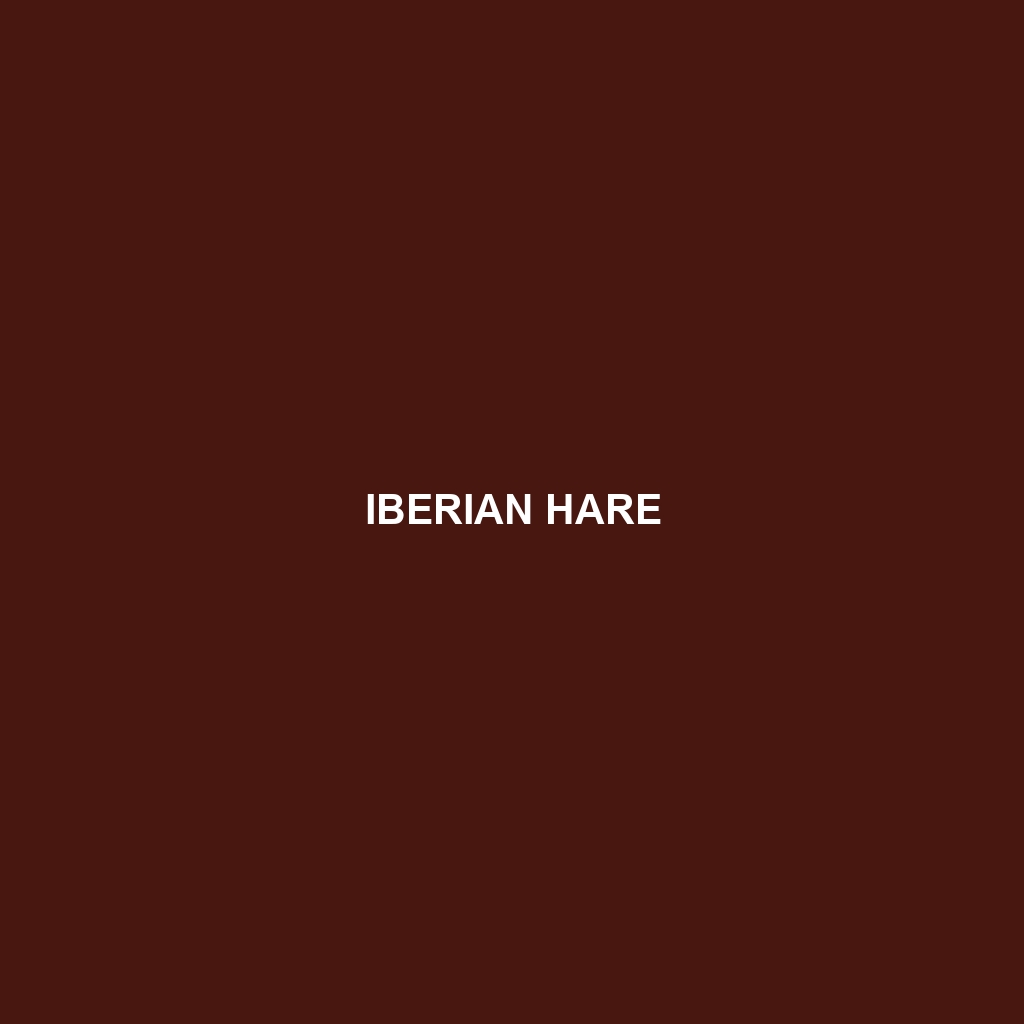Iberian Hare – Species Description
Common Name: Iberian Hare
Scientific Name: Lepus granatensis
Habitat
The Iberian Hare is primarily found in the Mediterranean regions of southern Europe, particularly in Spain and Portugal. It prefers open grasslands, scrublands, and areas with dense vegetation where it can easily find shelter and forage for food. The species thrives in diverse habitats, including agricultural lands and rural areas, making it adaptable to both natural and human-altered environments.
Physical Characteristics
Iberian Hares possess distinct physical traits that set them apart from other hare species. They typically weigh between 3.5 to 5 kg and grow to about 55-70 cm in length. The coat is predominantly brown or grayish with lighter underparts, providing excellent camouflage in their natural habitats. Their long ears and large hind legs are characteristic features, enabling them to detect predators and outrun them effectively.
Behavior
The behavior of the Iberian Hare is fascinating and contributes to its survival. These hares are crepuscular, meaning they are most active during dawn and dusk. They are known for their exceptional agility and speed, often reaching speeds of up to 70 km/h when fleeing from threats. Socially, they tend to be solitary or live in small groups, and they establish home ranges, which they defend against other hares.
Diet
In terms of diet, the Iberian Hare primarily feeds on a variety of plant materials. Their feeding habits consist of grass, herbs, leaves, and fruits, which provide essential nutrients. Known for their selective grazing, Iberian Hares often prefer tender young shoots, which can significantly influence local vegetation patterns. This herbivorous diet plays a crucial role in their survival and reproductive success.
Reproduction
The reproductive habits of the Iberian Hare are quite remarkable. Breeding typically occurs from late winter through spring, with females capable of producing multiple litters each year. Each litter can consist of 2 to 4 leverets, which are born fully furred and possess their eyes open. Maternal care is essential, as mothers often conceal their young in shallow depressions to protect them from predators.
Conservation Status
Currently, the Iberian Hare is classified as vulnerable due to habitat loss and hunting pressures. Conservation efforts are being implemented to protect their habitats and ensure sustainable populations. Specific initiatives target land management practices and hunting regulations to safeguard this important species.
Interesting Facts
One fascinating fact about the Iberian Hare is its ability to leap distances of over 3 meters in a single jump, making it one of the most agile hares. Additionally, their strong territorial instincts lead them to use scent marking for communication, establishing a presence in their environment.
Role in Ecosystem
The Iberian Hare plays a significant role in the ecosystem as a herbivore, helping to maintain plant diversity and serving as a food source for various predators, including foxes and birds of prey. Their grazing behavior helps control vegetation growth, indirectly benefiting the habitats utilized by other species, thus highlighting their ecological importance.
